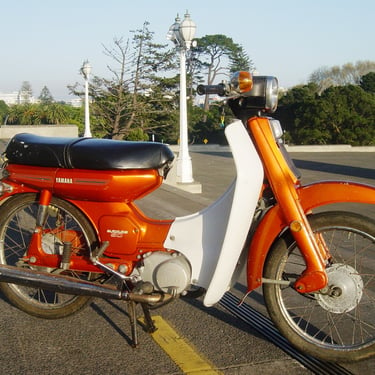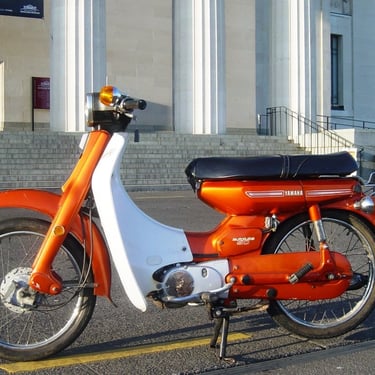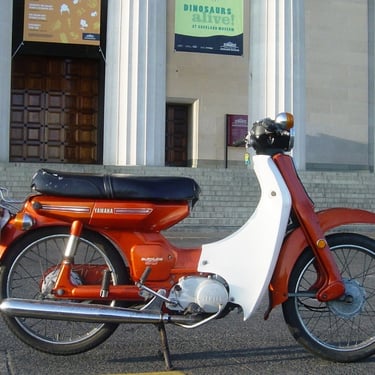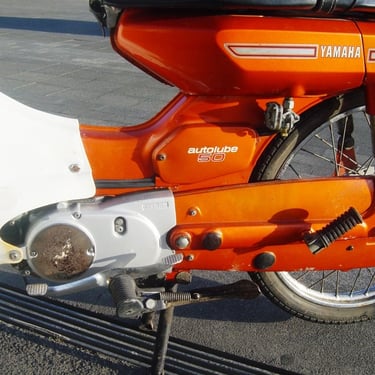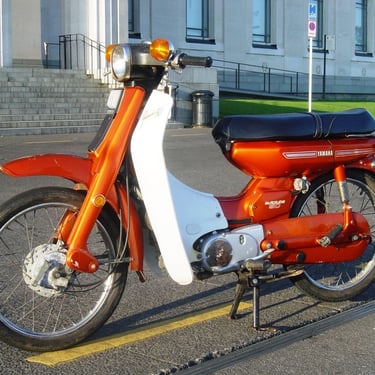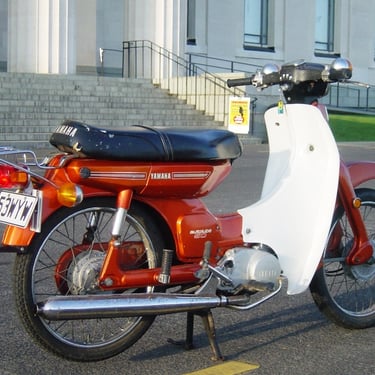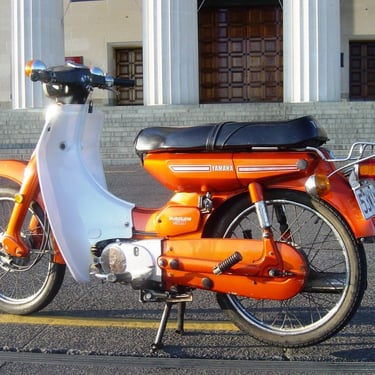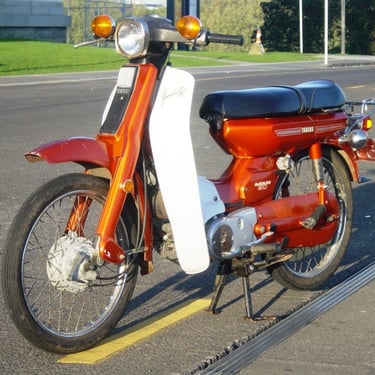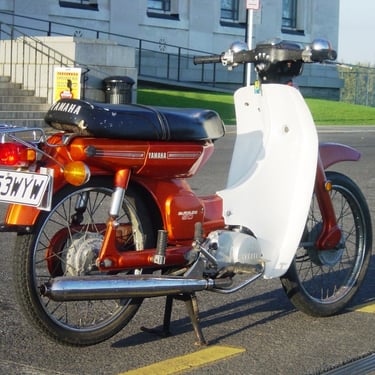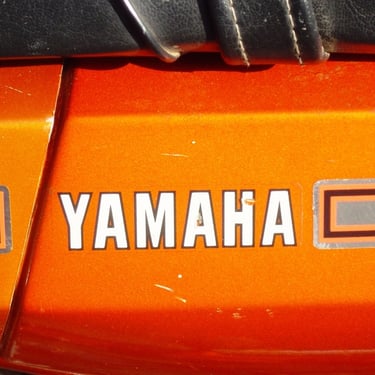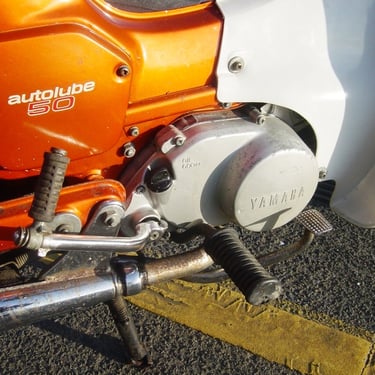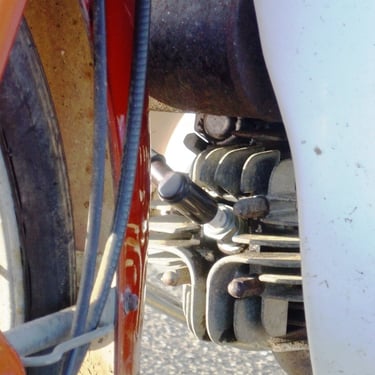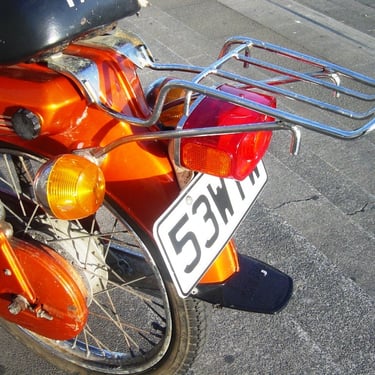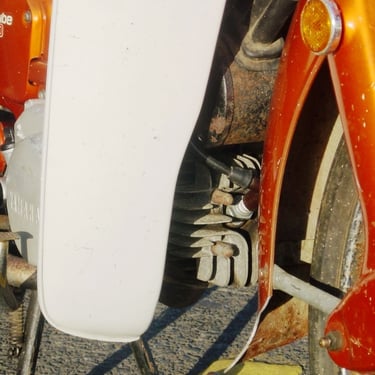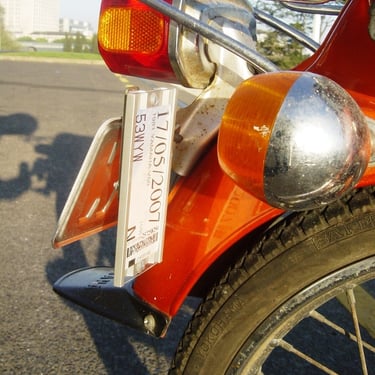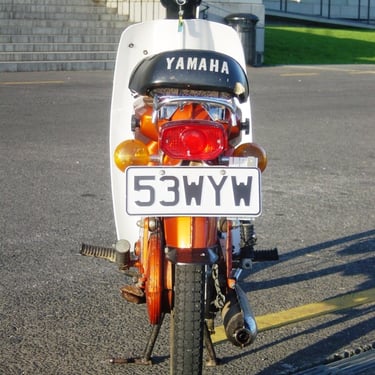The 1981 Yamaha V50 Moped: A Compact Classic on Two Wheels
The 1981 Yamaha V50 moped is a vintage classic celebrated for its practicality, reliability, and stylish design, making it a standout choice for urban commuting in the early 1980s. Powered by a 49cc two-stroke engine paired with a three-speed manual transmission, it offered smooth performance, excellent fuel efficiency, and ease of maintenance. Its lightweight frame, compact size, and step-through design made it accessible to riders of all ages, while its durable suspension and maneuverability were ideal for navigating crowded city streets. Widely popular in Europe and Asia, the V50 became a symbol of affordable independence and remains cherished among vintage motorcycle enthusiasts for its timeless appeal and enduring functionality.
TWO STROKEYAMAHA 1980'SMOTORCYCLES JAPAN
1/7/20254 min read
The 1981 Yamaha V50 Moped: A Compact Classic on Two Wheels
The 1981 Yamaha V50 moped holds a special place in the hearts of vintage motorcycle enthusiasts. As part of Yamaha’s effort to create efficient, reliable, and stylish two-wheelers for urban commuting, the V50 moped became a standout model in the early 1980s. Combining practicality with a touch of flair, the V50 offered an accessible mode of transportation for riders of all ages. This article dives deep into the history, design, performance, and legacy of the 1981 Yamaha V50 moped.
A Brief History of Yamaha Mopeds
Yamaha, one of the most renowned names in the motorcycle industry, has a long history of producing mopeds and small-displacement motorcycles designed for everyday use. In the late 1970s and early 1980s, mopeds gained popularity worldwide as affordable and fuel-efficient alternatives to cars. Yamaha responded to this demand by introducing a range of lightweight mopeds that were easy to ride, maintain, and store.
The Yamaha V50 was introduced as part of this trend. It was aimed at riders looking for a dependable yet stylish way to navigate city streets. The V50 was particularly popular in Europe and Asia, where compact vehicles were highly valued for their ability to maneuver through crowded urban areas.
Design and Features
The design of the 1981 Yamaha V50 reflected the era's emphasis on simplicity and functionality while incorporating a touch of modern flair. Here’s an overview of its key features:
Frame and Body
The V50 featured a compact, lightweight frame that made it easy to handle, even for novice riders. Its step-through design allowed for effortless mounting and dismounting, which was especially convenient for commuters carrying bags or wearing formal attire.
The bodywork was minimal yet stylish, with clean lines and a sleek profile that gave it a modern look. The moped came in a variety of color options, including classic shades like red, blue, and silver, appealing to a wide range of riders.
Engine
At the heart of the Yamaha V50 was its reliable 49cc two-stroke engine. Small but mighty, this engine provided enough power for city commuting while maintaining excellent fuel efficiency. The two-stroke design ensured smooth acceleration and reduced maintenance requirements.
The engine was paired with a three-speed manual transmission, which gave riders better control over their speed and performance compared to fully automatic mopeds. The manual gearbox also added a touch of engagement for those who enjoyed the act of riding.
Suspension and Wheels
The V50 was equipped with twin rear shock absorbers, providing a comfortable ride even on uneven roads. Its small-diameter wheels (typically 14 or 16 inches) were fitted with durable tires that offered good grip and stability.
Fuel Efficiency
One of the standout features of the Yamaha V50 was its impressive fuel efficiency. With its small engine and lightweight construction, the moped could achieve mileage figures that made it an economical choice for daily transportation. Riders could cover significant distances on just a few liters of fuel, making it ideal for budget-conscious commuters.
Performance and Riding Experience
While the Yamaha V50 wasn’t built for speed or long-distance travel, it excelled in its intended role as a city commuter. The 49cc engine delivered modest power, allowing the moped to reach top speeds of around 30-40 mph (48-64 km/h). This was sufficient for navigating urban streets and keeping up with city traffic.
The lightweight frame made the V50 incredibly nimble, allowing riders to weave through congested areas with ease. Its compact size also meant it could be parked almost anywhere—a valuable feature in crowded cities where parking space was at a premium.
The three-speed manual transmission added an element of control that many riders appreciated. Shifting gears was smooth and intuitive, making the riding experience both engaging and enjoyable.
Maintenance and Reliability
Yamaha’s reputation for building durable and reliable motorcycles extended to the V50 moped. Its simple design and robust engineering meant that it required minimal maintenance to keep running smoothly. Routine tasks such as oil changes, spark plug replacements, and chain adjustments were straightforward and could often be performed by the owner.
The two-stroke engine was known for its longevity when properly cared for. However, like all two-stroke engines, it required a mix of oil with gasoline to ensure proper lubrication. This was a small trade-off for the engine’s simplicity and efficiency.
Spare parts for the Yamaha V50 were widely available during its production run and remain accessible today through vintage motorcycle specialists and online marketplaces. This has helped keep many V50 mopeds on the road decades after their initial release.
Cultural Impact and Legacy
The 1981 Yamaha V50 moped became a symbol of practicality and freedom for many riders around the world. Its affordability made it accessible to students, young professionals, and anyone looking for an economical way to get around town. For some, it represented their first taste of motorized independence—a rite of passage into the world of two wheels.
In countries where mopeds were a common mode of transportation, the V50 became a familiar sight on city streets. Its reliability earned it a loyal following among commuters who needed a dependable vehicle for daily use.
Today, the Yamaha V50 is considered a classic among vintage motorcycle enthusiasts. Restored models are often showcased at motorcycle events and rallies, where they are admired for their timeless design and historical significance. Collectors value the V50 not only for its nostalgic appeal but also for its enduring functionality.
Conclusion
The 1981 Yamaha V50 moped remains an iconic example of Yamaha’s commitment to creating practical yet stylish vehicles for everyday use. With its lightweight design, reliable two-stroke engine, and exceptional fuel efficiency, the V50 became a beloved choice for urban commuters in its time. Decades later, it continues to hold a special place in the hearts of riders who appreciate its simplicity and charm.
Whether you’re a vintage motorcycle enthusiast or simply curious about classic mopeds, the Yamaha V50 is a testament to how thoughtful engineering can create a vehicle that stands the test of time.
